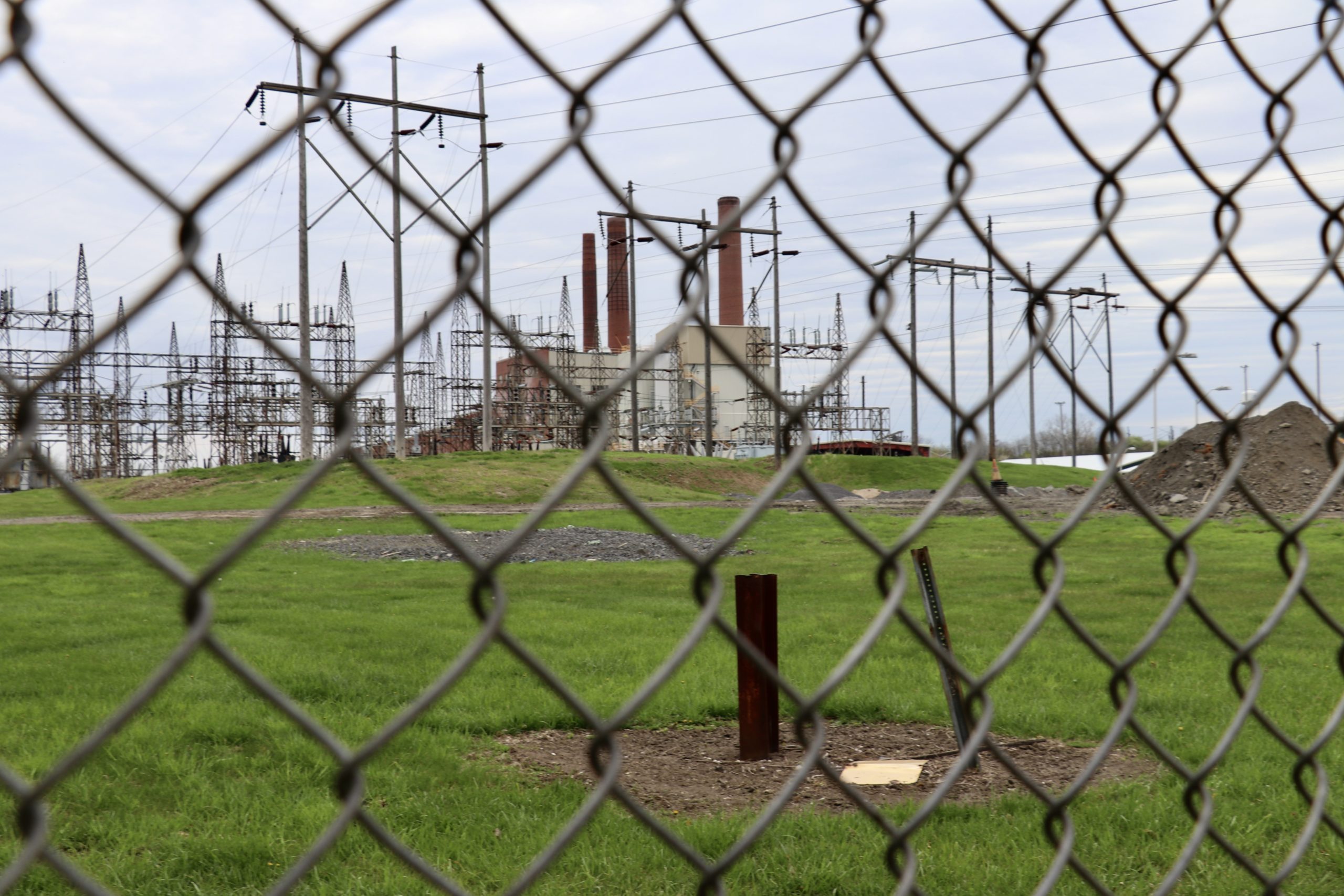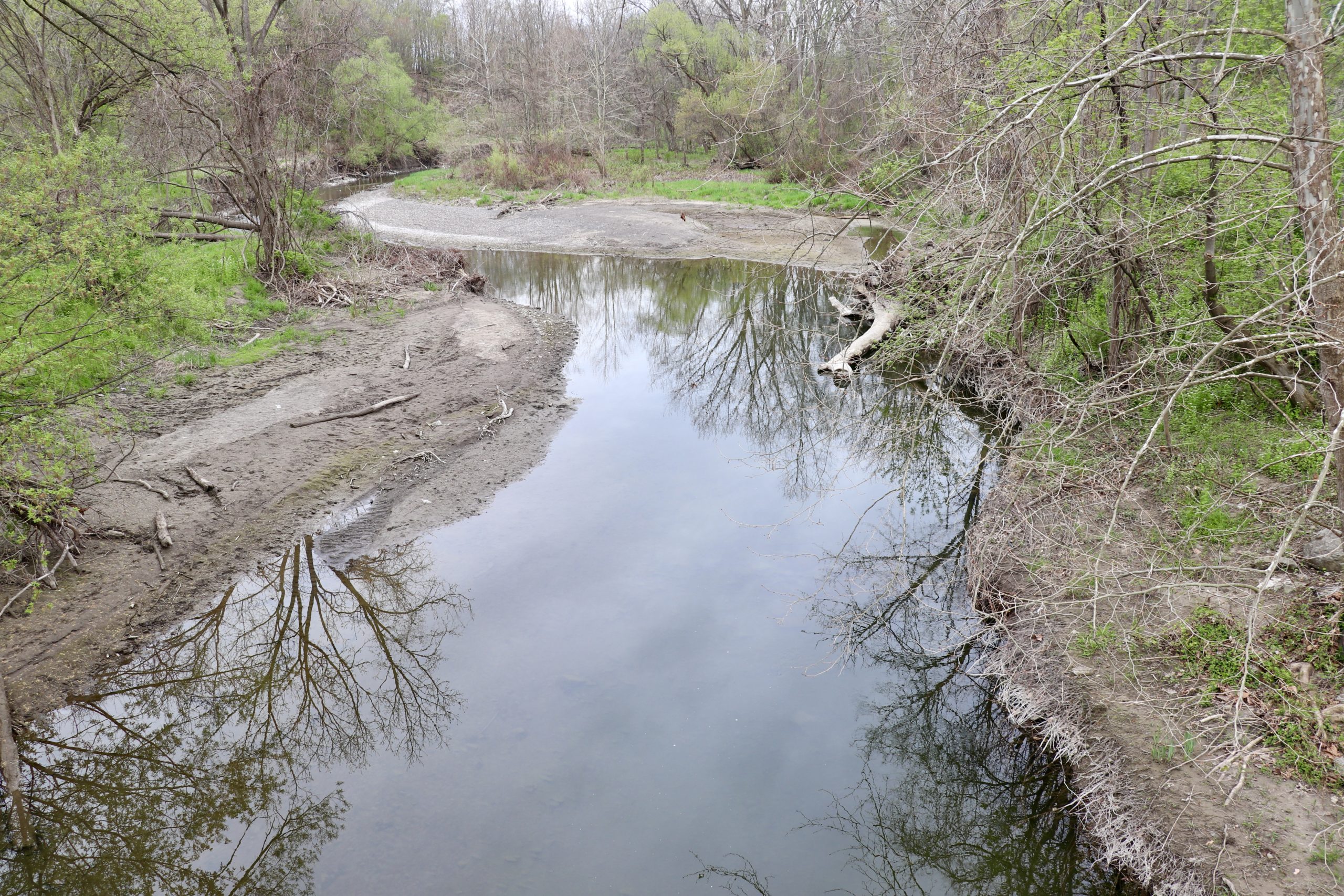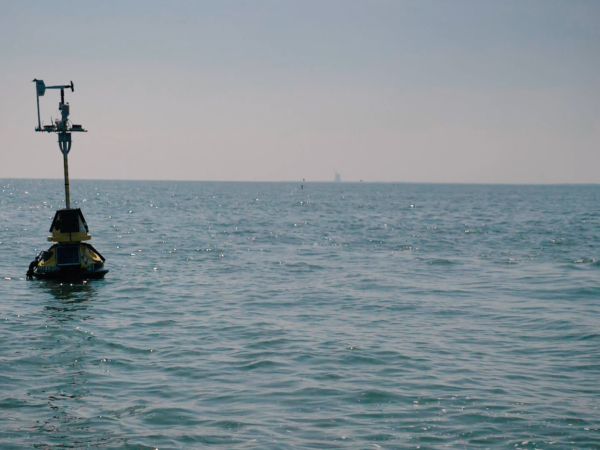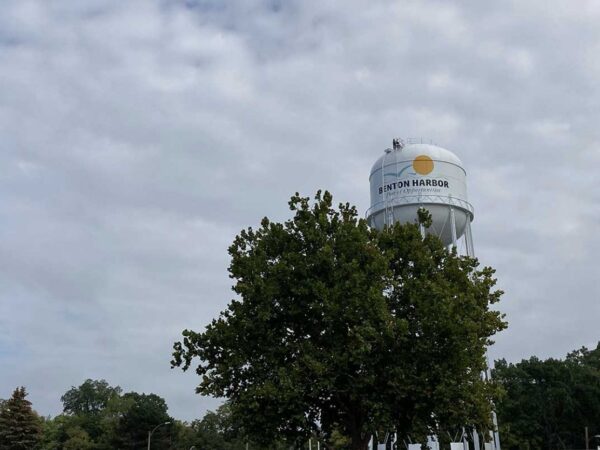
The village of Dresden is nestled amid charming vineyards and the placid blue waters of Seneca Lake, the largest of Upstate New York’s Finger Lakes.
Wineries, breweries, dairy farms, and state parks dot the lake’s shoreline, making it a picture-perfect vacation destination.
But for local residents, the three auburn-colored smokestacks of Greenidge Generation’s plant towering above the trees are an unnerving reminder that their natural resources are at risk. The coal-fired power station closed in 2011 but was restarted in 2017. The operation to “mine” cryptocurrency, an energy-intensive process using computer data servers, began in 2019.
The plant is now powered by natural gas, but the toxic legacy of its decades of burning coal remains. Two million tons of toxic coal ash stored off-site and on-site have become the responsibility of the cryptocurrency operation, and locals are not happy with how the company is managing the pollution.
The Environmental Protection Agency has also expressed its displeasure, denying an extension the company sought to close its coal ash pond. A leaked EPA document published by E&E News in June showed Greenidge first on a list of 160 coal ash sites that “potentially” have coal ash below the water table, meaning leaving the ash there — as Greenidge plans to do — would violate federal rules.
When Gary McIntee moved to his lakeside house on Seneca Lake’s Perry Point in 2016, he had no idea that he would find it challenging to access clean drinking water. His home draws water directly from the lake, but water contaminated with heavy metals is dumped into a river that feeds the lake, so McIntee doesn’t feel confident that the water is safe to drink.
He lives a mile from the power plant and cryptocurrency operation, that bills itself — ironically, as many locals see it — as “green.” The contamination comes in large part from wastewater from the coal ash leftover from the decades that the power plant burned coal to provide electricity for this region in the Finger Lakes. After the coal plant closed and its owner filed for bankruptcy, in 2014 it was bought by a private equity firm, Atlas Holdings LLC, that established a subsidiary called Greenidge Generation Holdings Inc. to run the plant and bitcoin mining. Greenidge and its attorneys did not respond to multiple requests for comments.
There are more than 700 coal ash repositories nationwide. Most of them are unlined and contaminate groundwater — as shown by companies’ own data — with heavy metals like mercury, lead, arsenic, cadmium, selenium, and other substances that can cause serious health effects.
At Greenidge, contamination could come from both coal ash leaching into groundwater as at most sites, and also from effluent collected from a coal ash landfill and dumped into a river that drains into Seneca Lake. This effluent contains toxic mercury, among other contaminants. The village of Dresden is within the Town of Torrey, and around 100 residents in the town draw water from either shallow wells on their land or pipes directly from Seneca Lake. No government entity monitors or regulates these private water sources, unlike municipal drinking water systems. Residents including McIntee worry that mercury and other contaminants from coal ash are making their water unsafe to drink or use, and endangering recreation and aquatic life in the lake.
McIntee, who majored in chemistry, learned about water purification while working as a dialysis technician for a hospital. He now filters and treats the water he draws from his shore well. Ultraviolet rays kill pathogens but do nothing for the toxic heavy metals. He uses the water to bathe and cook, but he does not drink it.
“We tend to use bottled water and go through several cases in a month,” said McIntee, who is now a real estate agent.
Federal action
In 2015, the U.S. EPA adopted federal coal ash rules requiring companies to monitor and remediate groundwater and develop closure plans for coal ash repositories. The rules required unlined ponds to stop accepting new waste by April 2021, but Greenidge was among 57 companies requesting an extension. In January, the EPA announced its intention to enforce the rules and denied Greenidge’s extension, saying the power plant has to stop depositing waste in its unlined C-Pond since it no longer burns coal.
Greenidge said it still needs the pond for “waste” from its natural gas combustion. The C-Pond no longer receives coal ash and natural gas combustion produces no ash. However, the company uses the pond to store water that is used in the natural gas-burning plant, water that runs off the coal pile still stored on the site, and other stormwater run-off from the site.
Under the federal coal ash rules, companies need to propose plans for closing their repositories, usually either by removing the ash and putting it in a lined landfill or leaving the ash in place and covering it with an earthen cap to keep out rainwater. Greenidge has proposed plans to cap its ash pond in place.
Groundwater samples taken near the pond show low levels of contaminants. But the company’s groundwater monitoring report notes weaknesses in the monitoring process, since coal ash deposited in the ground outside the pond could influence results, and the monitoring wells meant to establish background levels also could be getting flow from the pond. Environmentalists similarly are concerned that the monitoring wells were not put in the right spots, and the contamination may be higher than the reports indicate.
Upgradient wells are meant to reflect the natural groundwater conditions in a given area, not impacted by coal ash repositories. But the well Greenidge designated as upgradient is in the middle of the power plant site, where environmentalists think it may be contaminated by coal ash dumped in years past. If the upgradient well is contaminated, then it does not provide a fair baseline for comparison to the monitoring wells that are downgradient from the coal ash pond. Environmental groups have identified similar dynamics as a common problem with groundwater monitoring at coal ash sites nationwide and cited the dynamic in a May notice of intent to sue sent to the EPA and Department of Justice. They say upgradient wells are often contaminated by “historic ash” scattered around power plant sites, hence they do not really reflect the natural background levels of metals in groundwater, and contamination caused by coal ash could be misrepresented as “natural.”
Rachel Treichler, an attorney who works with environmental groups in the Finger Lakes region, thinks the entire area surrounding the plant is contaminated, so the fact that there is not much difference between “upgradient” and “downgradient” readings does not mean there is no coal ash contamination. She believes that more monitoring wells should be installed in appropriate locations to obtain a more comprehensive view.
A troubling landfill

As the Lockwood landfill stands amidst farmlands, it obscures the view of the pristine waters of Seneca Lake. (Photo Credit: Sruthi Gopalakrishnan)
The Lockwood Ash Disposal landfill was built in 1979 and used to store coal ash from power company AES’s various plants in the region, including Greenidge as well as Cayuga, Westover, Hickling, and Jennison stations.
After years of accumulating coal ash, the landfill now towers over the surrounding lush green farmlands. Greenidge Generation Holdings Inc., the cryptocurrency company, acquired the landfill as part of its larger purchase of the coal plant from AES.
Abi Buddington, a Dresden property owner and secretary of the Committee to Protect the Finger Lakes, remembers when the landfill was much smaller than it is today. She said the “landfill continues to grow” in recent years. In 2021, the landfill received 21 tons of coal ash, according to documents filed by the company, presumably from other coal plants since Greenidge’s plant no longer burns coal. The company did not respond to a question about the landfill’s growth.
Toxic leachate from the landfill is held in a lined treatment pond, and the effluent is dumped directly into the Keuka Lake Outlet that runs into Seneca Lake.
Meanwhile, according to groundwater monitoring reports posted online by the company, the pond holding landfill effluent is leaching boron, lithium, arsenic, cobalt, and fluoride into groundwater.
A consent agreement between the state Department of Environmental Conservation and Greenidge notes that groundwater at the site contains toxic substances above water quality standards and the state “believes the Leachate Pond is a source of the substances.”

The Keuka Lake Outlet runs right next to the power plant, and effluent from the company’s landfill is dumped in the stream before it joins Seneca Lake. (Photo Credit: Sruthi Gopalakrishnan)
Lenient regulation?
The Finger Lakes boasts thriving agriculture, winemaking, and tourism industries that rely on clean air and water, locals note. So they are upset about what they see as the state regulatory agency’s lax approach toward Greenidge.
In an inland holding pond near Seneca Lake, wastewater from the C-Pond is combined with discharges from Ferro Corporation, an unrelated industry that makes pigments and glass.
Wastewater released from both the holding pond and the landfill is allowed to contain up to 70 times the concentration of mercury allowed by federal limits known as WQBEL, or water quality-based effluent limits meant to ensure water bodies comply with state pollution standards. Reports the company is required to file in 2022 showed mercury concentrations at least three or four times the federal limit.
Treichler says these mercury discharges are a problem, and she also wonders why the state set allowable limits so high.
Yvonne Taylor, vice president of Seneca Lake Guardian, a local nonprofit conservation group, notes that mercury bioaccumulates in fish, making them dangerous to eat.
Taylor has been fighting to protect Seneca Lake for over a decade from what she calls “predatory corporations” that try to exploit natural resources for private financial gain.
“Seneca Lake is in every fiber of my being, and I care about it very much,” Taylor said.
Coal ash is not the only concern for environmental advocates. Every day, the plant is allowed to draw up to 139 million gallons of water from Seneca Lake to cool its computer servers. Warm water, which can contribute to harmful algae blooms, is then released into the lake’s Dresden Bay area.
Federal regulations require intake pipes drawing more than 2 million gallons to be fitted with a screen to prevent fish from getting sucked in. The state’s environmental agency gave Greenidge five years to comply with the requirements — meanwhile, the cumulative impact on fish is not known.
This summer state regulators denied Greenidge’s application to renew its air permit, pleasing environmentalists and locals. The agency stated that the facility’s operation would be “inconsistent with the statewide greenhouse gas emission limits.”
However, the permit rejection will not have an immediate impact on cryptocurrency mining, as the company can continue operations while an appeal is pending, which it has stated it will do.
Treichler, who has lived in the Finger Lakes region for 20 years, is concerned about the impact of Greenidge and other industrial facilities on the region’s abundant water resources — the linchpin of agriculture and tourism.
“My biggest concern with bitcoin mining is that it offers a huge incentive to restart inefficient, old, dirty, and environmentally damaging electric generating stations all over this state, this country, and the world,” Treichler said, “for a purpose that I think is a scam at a time when we desperately need to be conserving our freshwater resources and reducing our greenhouse gas emissions.”
Editor’s note: This story has been updated with the following clarifications provided by Greenidge Generation after publication:
- Cryptocurrency operations at the facility began in 2019, not 2017
- Greenidge’s cooling water discharges have not been conclusively shown to contribute to algae blooms
- Cryptocurrency operations will continue despite a state permit rejection, pending appeal
Catch more news at Great Lakes Now:
Cracking down on coal ash: Tough talk and tough choices
Historic coal ash raises concerns at iconic Illinois coal plant site
Featured image: A high fence surrounds the Greenidge Generation bitcoin mining facility in the village of Dresden. (Photo Credit: Sruthi Gopalakrishnan)




